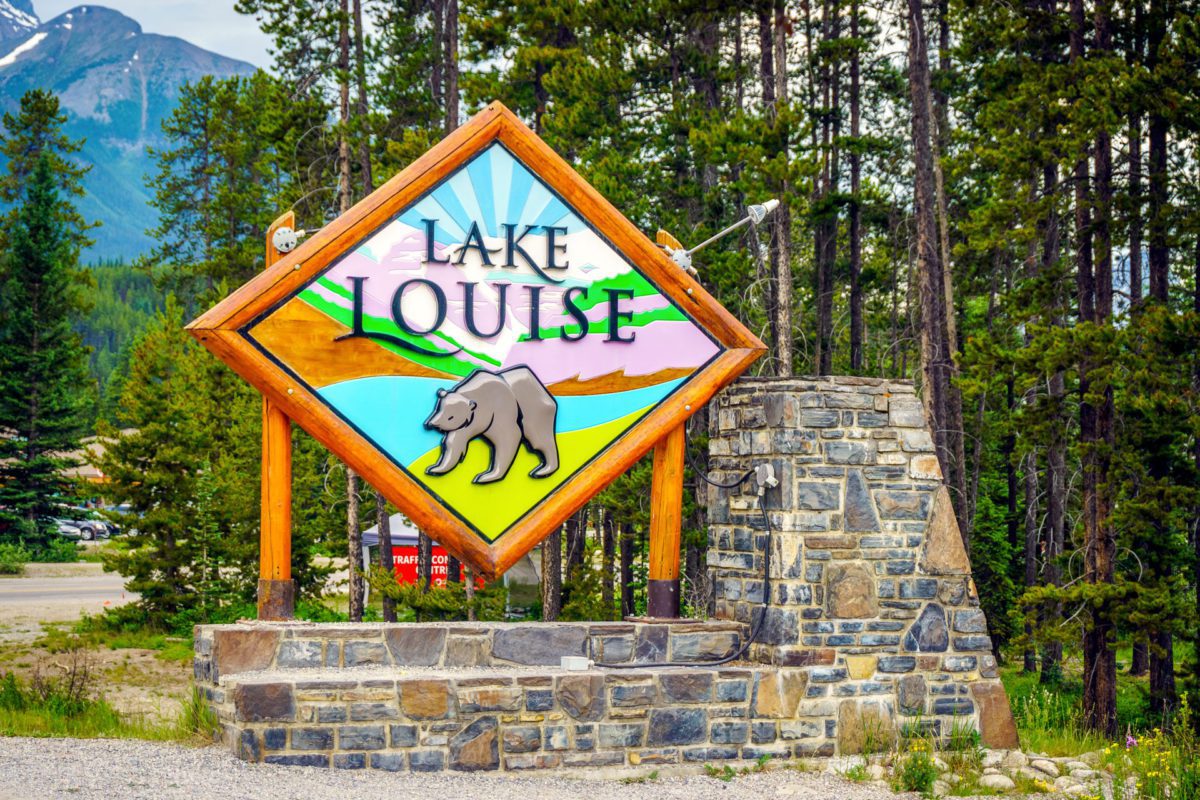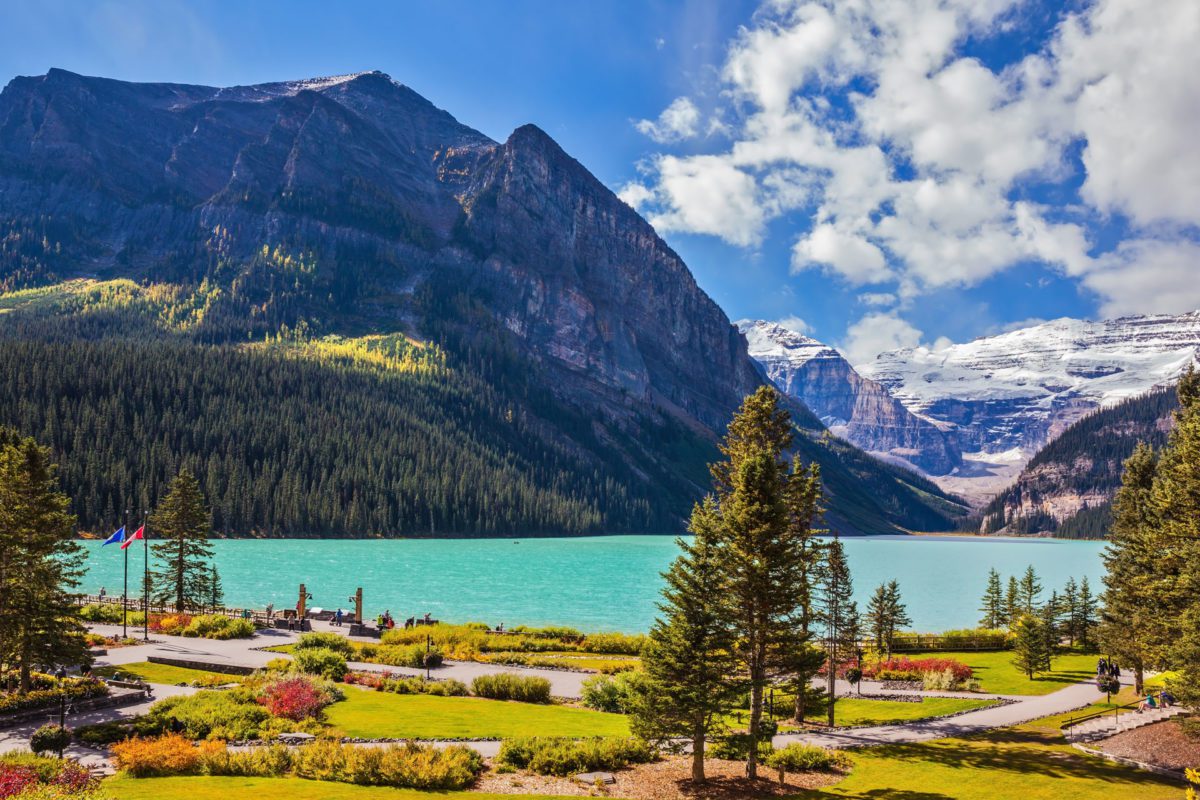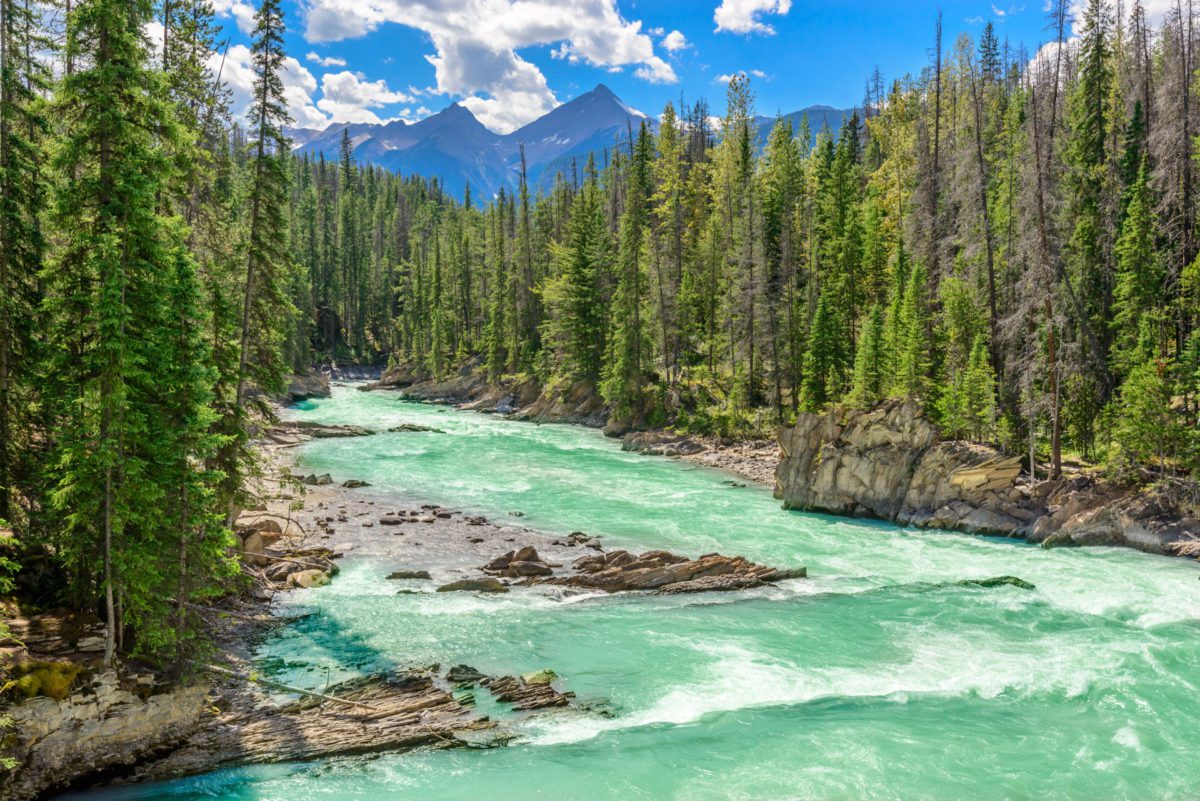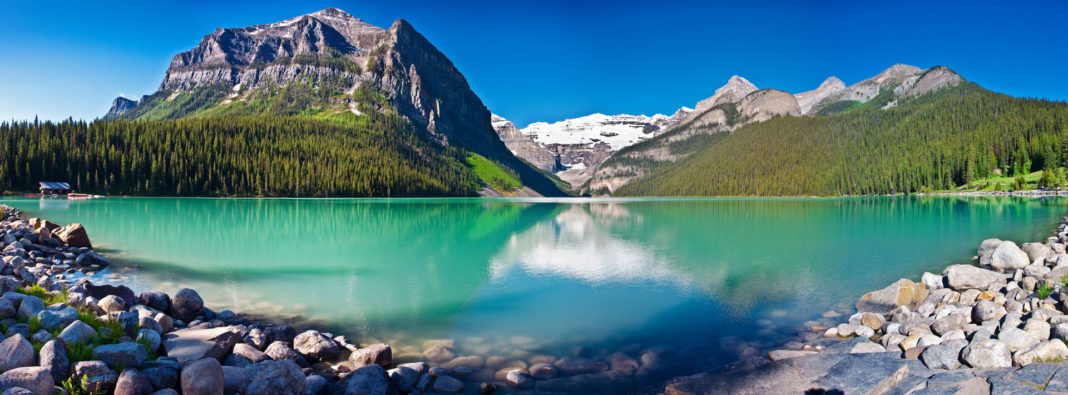Vividly turquoise and fed by melting snow, Lake Louise is a stunning blue sapphire cradled in the Rockies, colored by sunlight as it reflects off suspended glacial sediment. In the summer, the lake’s hue presents a striking contrast to the red canoes floating above.
Named after Princess Louise Caroline Alberta, the sixth of Queen Victoria’s nine children, Lake Louise is a natural alpine lake a mile long and a third of a mile wide, five thousand feet in elevation. At one end, Mount Victoria and the Victoria Glacier stand majestically against the azure Alberta sky. At the other, the enchanting Fairmont Chateau Lake Louise sits on the very edge of the water.
It was in 1890 when the Canadian Pacific Railroad opened the Chateau, as the locals call it, one of many grand CPR hotels built to encourage train travel. The idea worked – the hotel was a huge success. Walk the lake trail, hike to a high-country tea house, and then take advantage of the 539-room resort’s aquatic pool, steam room, whirlpool, fitness center and seven restaurants. What’s not to like?
Speaking of accommodations, the Rimrock Resort Hotel in Banff is also excellent, built into the side of a cliff up by the original springs. And the magnificent Fairmont Banff Springs Hotel, another CPR project, should be considered, too.
Back at the lake, the easy out-and-back hike around it starts at the Chateau, takes a little more than an hour and is open year-round. In the winter months, cross-country skiers frolic on the frozen waters, horse-drawn sleighs patrol the shoreline, and ice climbers feel compelled to ascend frozen waterfalls. The park is home to a trio of top-notch snowboard and ski areas, too.
Lake Louise usually melts by late May and the alpine hiking season begins a few weeks later. The tea houses at Lake Agnes and the Plain of Six Glaciers, open from June to mid-October, are popular day hikes. Earl Grey and snacks can be found at 7,500 feet.
The lake itself is situated inside Banff National Park, a 2,560-square-mile swath of pristine beauty just west of Calgary, Alberta. In fact, Banff is Canada’s first national park.





In 1883, railway workers discovered a natural hot spring at the base of Sulphur Mountain in the town of Banff, about 40 minutes southeast of the lake. That area is now a National Historic Site called Cave and Basin, and features hot springs spouting from the ground, a replicated 1887 bathhouse and a circa-1916 swimming pool. There are nine naturally-occurring hot springs in the Banff area.
Golfers take note – The Fairmont Banff Springs Golf Course is more than 100 years old and has matured into one of the world’s most beautiful courses, winding between and around Tunnel Mountain, Mount Rundle and the Bow River.
Get a different perspective on things by climbing aboard the Banff Sightseeing Gondola just outside of town. In eight minutes, you’re taken to the 7,486-foot-high station at the pinnacle of Sulphur Mountain. Enjoy the views from one of the many restaurants up top. The wildlife is plentiful in the park – elk, bighorn sheep, mountain goats, grizzlies, caribou, moose and bald eagles.
Eighty miles northwest of Lake Louise is the amazing Columbia Icefield Skywalk, a glass-bottomed walkway suspended a thousand feet above the floor of the Sunwapta Valley. The unobstructed views of the snow-topped mountains, rushing waterfalls and the valleys beyond take your breath away.
The skywalk is in Jasper National Park, and it’s a gorgeous drive up from the lake to the 4,200-square mile park, the town of Jasper and the very fine Fairmont Jasper Park Lodge …yes, another of Canada’s impressive, historic railway hotels.

























